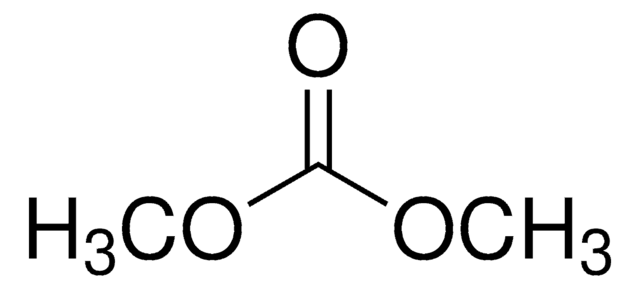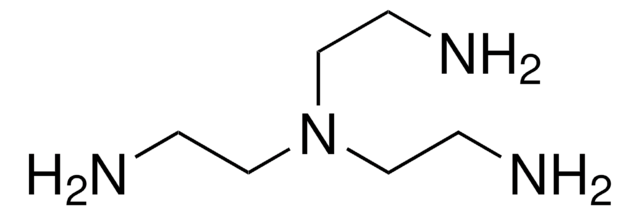Key Documents
550019
N,N-Dimethyldipropylenetriamine
99%
Synonim(y):
DMAPAPA
About This Item
Polecane produkty
Poziom jakości
Próba
99%
współczynnik refrakcji
n20/D 1.4630 (lit.)
tw
220 °C (lit.)
gęstość
0.883 g/mL at 25 °C (lit.)
grupa funkcyjna
amine
ciąg SMILES
CN(C)CCCNCCCN
InChI
1S/C8H21N3/c1-11(2)8-4-7-10-6-3-5-9/h10H,3-9H2,1-2H3
Klucz InChI
OMKZWUPRGQMQJC-UHFFFAOYSA-N
Opis ogólny
Zastosowanie
- Prepare poly(ethylene oxide)-b-poly(3-caprolactone-g-DP) [PEO-b-P(CL-g-DP)], a biodegradable amphiphilic polycationic copolymer.
- Develop a second generation aminoglycoside 6′-N-acetyltransferase (AAC(6′) inhibitor.
- Prepare a hydrophilic gemcitabine conjugated cationic copolymer, which can be employed in the treatment pancreatic cancer.
Informacje prawne
Hasło ostrzegawcze
Danger
Zwroty wskazujące rodzaj zagrożenia
Zwroty wskazujące środki ostrożności
Klasyfikacja zagrożeń
Acute Tox. 4 Dermal - Acute Tox. 4 Oral - Aquatic Chronic 2 - Skin Corr. 1A - Skin Sens. 1
Kod klasy składowania
8A - Combustible corrosive hazardous materials
Klasa zagrożenia wodnego (WGK)
WGK 1
Temperatura zapłonu (°F)
210.2 °F - closed cup
Temperatura zapłonu (°C)
99 °C - closed cup
Środki ochrony indywidualnej
Faceshields, Gloves, Goggles, type ABEK (EN14387) respirator filter
Wybierz jedną z najnowszych wersji:
Masz już ten produkt?
Dokumenty związane z niedawno zakupionymi produktami zostały zamieszczone w Bibliotece dokumentów.
Nasz zespół naukowców ma doświadczenie we wszystkich obszarach badań, w tym w naukach przyrodniczych, materiałoznawstwie, syntezie chemicznej, chromatografii, analityce i wielu innych dziedzinach.
Skontaktuj się z zespołem ds. pomocy technicznej











